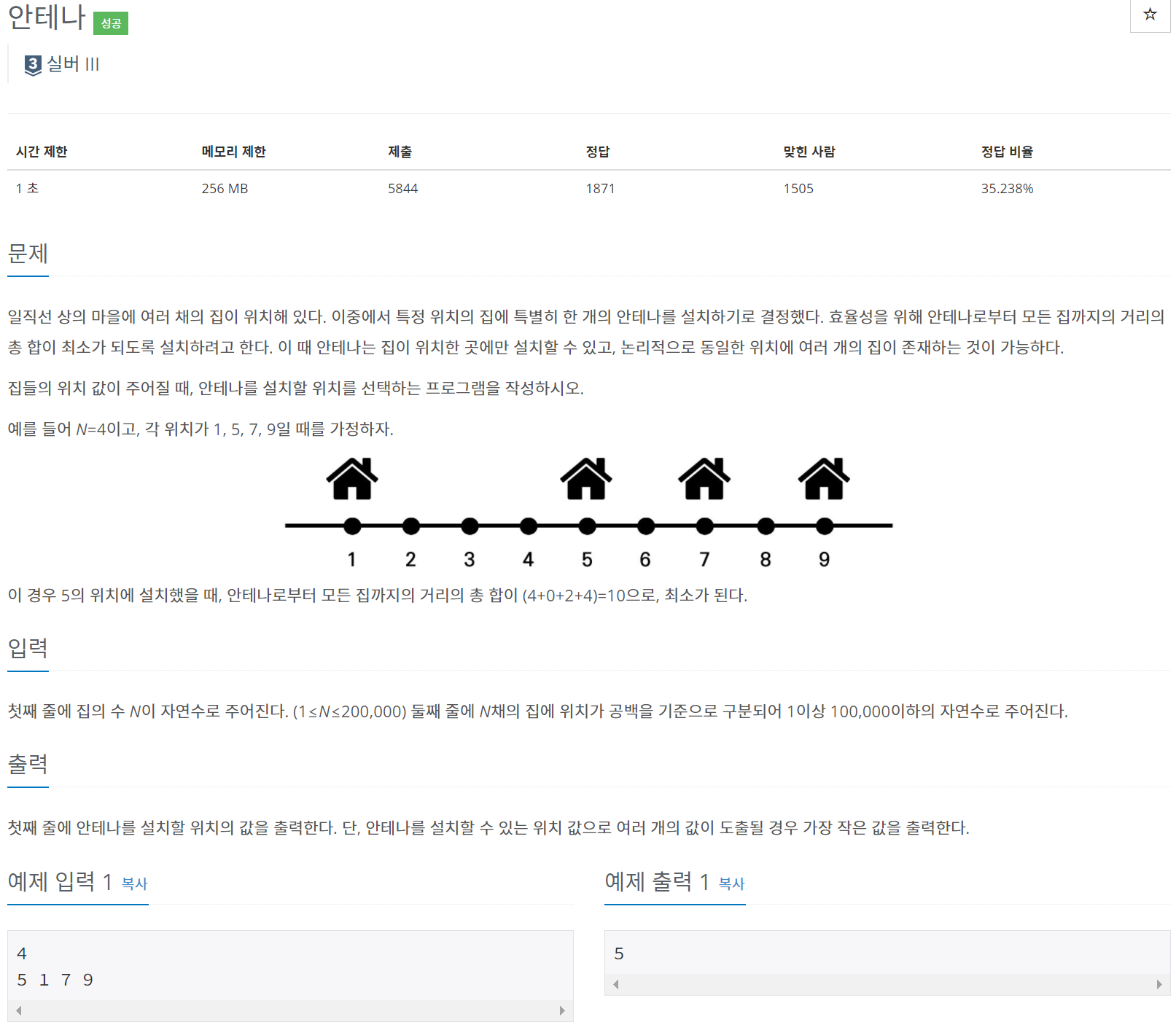
문제

풀이
문제를 보자마자 생각난 것은, 이진탐색을 활용한 풀이였다.
먼저 중앙값을 기준으로 좌, 우로의 합을 구해 더 작은 쪽으로 움직이는 것이다. 완전 이진 탐색보다는 시간복잡도가 높지만 그나마 괜찮은 방법으로 생각했던 것이었다.
하지만, 문제의 주요한 조건을 하나 놓쳐서 너무 복잡하게 푼 것 같다. 바로 안테나는 집이 위치한 곳에만 위치할 수 있다는 것이다.
import sys
def totalSum(loc, locations):
totalSum = 0
for location in locations:
totalSum += abs(loc-location)
return totalSum
def findPoleLocation(locations, n):
poleLocation = locations[n // 2]
if poleLocation - 1 <= 0 or poleLocation + 1 > locations[-1]:
return poleLocation
startSum = totalSum(poleLocation, locations)
left = totalSum(poleLocation - 1, locations)
right = totalSum(poleLocation + 1, locations)
flag = 0
minSum = 0
if startSum >= left:
flag = -1
poleLocation -= 1
minSum = left
elif startSum <= right:
return poleLocation
elif startSum > right:
flag = 1
poleLocation += 1
minSum = right
while True:
sumData = totalSum(poleLocation + flag, locations)
if minSum >= sumData:
if flag == 1:
return poleLocation
minSum = sumData
poleLocation += flag
else:
return poleLocation
# 집의 수
N = int(sys.stdin.readline())
locations = list(map(int, sys.stdin.readline().split()))
locations.sort()
위 코드에서 집이 위치한 곳에만 안테나를 위치시킨다면 조금 더 시간을 단축시킬 수 있지만 더 좋은 생각이 떠올랐다.
바로 정렬 후에 가운데 점을 선택하는 것이다.
가운데 값을 선택하게 될 때, 거리의 합이 최소가 된다는 것이다.
따라서 아래와 같이 매우 간단한 코드로 가능해진다.
import sys
N = int(sys.stdin.readline())
locations = list(map(int, sys.stdin.readline().split()))
locations.sort()
print(locations[(N - 1) // 2])결론
이번 문제에서 느낀 것은, 문제를 더 자세하게 읽고 조금 더 창의적으로 생각해보자이다. 정렬이 핵심인 문제였다.
